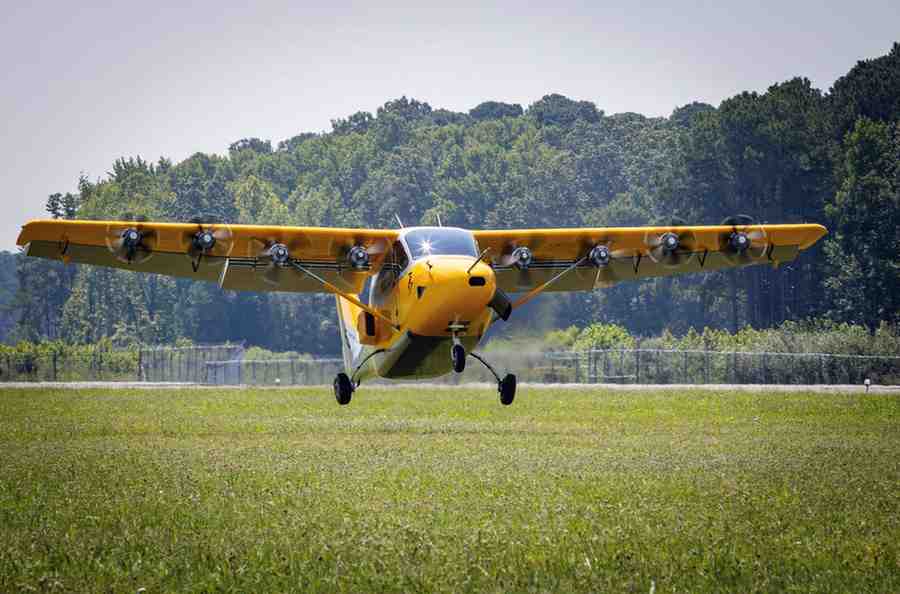Building a powerful nation with a strong military has been and continues to be a consistent objective of major powers. For this purpose, many focus on the military as well as the economy to boost their international standing. Many powers over time try to project their power far away from their shores and for this, they rely on their Navies. Since the advent of aircraft carriers and other advanced naval assets, naval power has been taken more into consideration as the most important factor in national security as well as in projecting power.
In today’s era, the United States Navy is considered one of the most advanced Naval Forces on Earth. It is the owner of the majority of aircraft carriers and a trendsetter in maintaining a naval fleet. The US Navy describes their Nimitz-class carrier as four and a half acres of sovereign and mobile American territory.
Most people know what an aircraft carrier or a submarine is but there are seven categories of modern warships which consist of aircraft carriers, cruisers, destroyers, frigates, corvettes, amphibious assault ships, and Submarines.
Aircraft Carriers
The first aircraft carriers became operational in the early 1920s, storing, launching, recovering, and servicing aircraft at sea. It enabled a nation with airborne operations far away from home and close to the enemy. A single supercarrier holds enough firepower to rival the entire air forces of some nations. A carrier air wing is able to perform over 150 strike missions at once, hitting over 700 targets a day.
It can also protect friendly forces, conduct electronic warfare, assist in special operations and carry out search and rescue missions. Supercarriers can accommodate four to five thousand personnel including the ship’s company air wing and other support staff. Even though aircraft carriers do have surface-to-air missiles, guns, and other armaments.
They usually do not travel alone, instead, they travel with a fleet composed of other classes of military ships called the carrier strike group. It is typically made up of an aircraft carrier at least one cruiser and two destroyers, or frigates and a carrier air wing of 65 to 70 aircraft. A carrier strike group could also on occasion include submarines, logistics ships, and a supply ship.
An aircraft carrier often acts as the command platform for large battle groups or multinational task forces. Aircraft carriers traditionally ran on diesel fuel but some of the newer aircraft carriers are nuclear powered.
Read More: Pakistan’s Strategic Forces Command Structure and Responsibilities
Cruisers
In colonial times, a cruiser would have been cruising the world showing off their flag and representing the overwhelming force that could be brought to bear far from home. Although, the name has stayed the role has not.
During the period between the end of the first World War in 1918 and the beginning of the Second World War in 1939 also known as the interwar period, Cruisers were limited by treaty to a maximum size of 10,000 tons. Two types were defined by treaty, the heavy cruisers carried anywhere between eight to ten eight-inch guns and the light cruisers carried twelve to fifteen six-inch guns. Meanwhile, both heavy and light cruisers carried a heavy battery of secondary anti-aircraft guns.
During wartime, cruisers were to operate alone on the high seas to interdict enemy commerce but also to protect the battle line against enemy light cruisers. Both types of cruisers usually have top speeds in excess of 30 knots. In today’s case cruisers are primarily guided missile warships ranging in size anywhere from 7000 to 10,000 tons. Only the world’s largest navies can afford to build and operate modern cruisers.
In today’s world, the role of the cruiser depends on the navy that it’s employed in. For example, in the U.S navy cruisers are primarily anti-air defense vessels while in the Russian navy they are anti-ship platforms. Cruisers’ other missions include commerce rads and shore bombardments. U.S navy decommissioned cruisers in the 90s since they were deemed too expensive to build and maintain.
Destroyers
Before destroyers, there were torpedoes. In 1866, an English engineer named Robert whitehead invented the first effective self-propelled underwater torpedo, named Whitehead Torpedo at the time. As battleships were heavily armored and protected against gunfire but only above the water line so the invention of whitehead torpedoes changed everything.
Now there was a weapon that could be carried on a small fast and relatively inexpensive boat called a torpedo boat that could strike a large ship underwater bypassing all its armor protection.
A torpedo had the potential to even sink a battleship with one blow. As a result, a new class of ships emerged to protect the main fleet from torpedo boats and it was creatively called torpedo boat destroyers.
Torpedo boat destroyers were larger than torpedo boats but much smaller than the cruisers and this meant that they were more maneuverable and better equipped to deal with the torpedo boats so they started traveling the blue waters with the fleet to protect them against torpedo boats.
Read More: Pakistan’s JF-17 fighter jet for developing countries
However, the destroyers themselves were armed with torpedoes which allowed them to torpedo bigger enemy warships beyond the range of the small coast. It was the end of the torpedo boats but not for the torpedo boat destroyers which are now just referred to as destroyers.
Destroyers were protectors of the fleet so when submarines became practical the destroyers were equipped with depth charges, sonar, and other anti-submarine weapons and became the submarine’s number one enemy when the aircraft became a major threat to the naval fleet destroyers adopted anti-air missiles so this is how destroyers became the jack of all trades among warships.
Today destroyers are the largest surface combatant operated by most navies ranging in size up to 6,000 tons. Destroyers are fast ships generally capable of speeds in excess of 30 knots in calm seas but with the destroyers getting larger and more heavily armed the difference between the cruisers and destroyers have greatly diminished.
While a cruiser should nominally be bigger this is not always the case but a cruiser is generally considered to have greater facilities for command and control which means cruisers have more space and spare energy to power the additional communication equipment and a command-and-control room to coordinate the defense of the fleet.
Frigates
Similar to destroyers’ frigates are quite common ships in the Navy’s fleet they’re quick to maneuver and their role is to escort and protect larger vehicles from air surface and underwater threats. Frigates are one of the smallest blue water surface combatants, in the past, they used to carry a lighter main battery than destroyers for example 3 3-inch or 2.5-inch guns would have been typical, these days they may have anti-air guns, and perhaps a small battery of torpedo tubes.
However, they’re not particularly well suited to theater air defense, their strength is usually anti-submarine weapons. For example, the royal navy’s duke class of frigates have specialized anti-submarine warfare capabilities and are fitted with enhanced sonar equipment and torpedoes anti-submarine warfare. Frigates come with helipads and hangers that accommodate helicopters capable of identifying and attacking nuclear submarines using torpedoes and depth charges.
Frigates are traditionally slower than destroyers although, in modern times there’s not a significant difference in their speed. Today’s frigates often displace up to 3000 tons and are usually capable of top speeds of 27 to 30 knots.
Some European navies such as the Dutch, French, German and Spanish use the term frigate for both their destroyers and their frigates.
Corvettes
Vessels that are smaller than frigates are typically identified as corvettes or missile boats which are not big enough to have a full air defense radar and therefore are not used to escort other vessels or defend large areas, they play more of an offense rule given that they can use their anti-ship missiles to attack and are small and maneuverable enough to avoid being hit. They’re also typically not suited or capable of operating in blue waters so they typically stay closer to the shores.
Read More: GIDS unveils attack version of Shahpar-II UAV
A missile boat is a small craft outfitted with several anti-ship missiles they have low costs and are somewhat an outgrowth of torpedo boats from WWII. A corvette is a smaller version of a modern frigate but is usually geared towards one type of mission either surface or anti-submarine warfare. They have less than 50 of the crew and have a
top speed that exceeds 40 knots. Littoral combat ships are smaller vessels and are well suited for littoral or close-to-shore operations. In other countries’ navies, the closest thing to littoral combat ships will be patrol vessels or corvettes. In a 2016 announcement, the U.S navy abandoned the modular concept for littoral combat ships and decided to use them with a single module
Amphibious assault ships
Amphibious assault ships are used to help land and support ground forces on enemy territory. They resemble aircraft carriers but they’re primarily designed for supporting helicopters. They can also carry vertical and short takeoff and landing aircraft most modern amphibious assault ships have a well deck which is a hangar-like deck located at the waterline in the stern of the ship. When the well deck is flooded landing craft like hovercraft can be launched and recovered without the need for a crane.
Submarine
A submarine also commonly referred to as a sub is a watercraft that’s capable of independent underwater operations submarines typically fall into one of three propulsion categories diesel-electric transmission, nuclear power, and air-independent propulsion.
Currently US Navy, Russian, French, the UK, Chinese and Indian Navy have nuclear power submarines in their fleet
Submarines range in size from submarines with a displacement of fewer than 150 tons to ballistic missile submarines with a displacement of up to 48000 tons when submerged.
There are three major types of submarines, especially in the US navy. It includes attack submarines, cruise missile submarines, and ballistic missile submarines.
Read More: Shaheen-III Medium Range Ballistic Missile: Pakistan’s effort to target last corner of India
Attack submarines use torpedoes as their main armament and have more of a multi-role mission. They are smaller in size making them faster and more maneuverable.
Cruise missile submarines are typically larger and slower focused on long-distance strikes using guided missiles
Ballistic missile submarines as the name suggests can carry and launch nuclear ballistic missiles.
Syed Ali Abbas is Research Officer & Comm Officer at the Center for International Strategic Studies (CISS) Islamabad.
- Syed Ali Abbashttps://defensetalks.com/author/syed-ali-abbas/
- Syed Ali Abbashttps://defensetalks.com/author/syed-ali-abbas/
- Syed Ali Abbashttps://defensetalks.com/author/syed-ali-abbas/
- Syed Ali Abbashttps://defensetalks.com/author/syed-ali-abbas/














